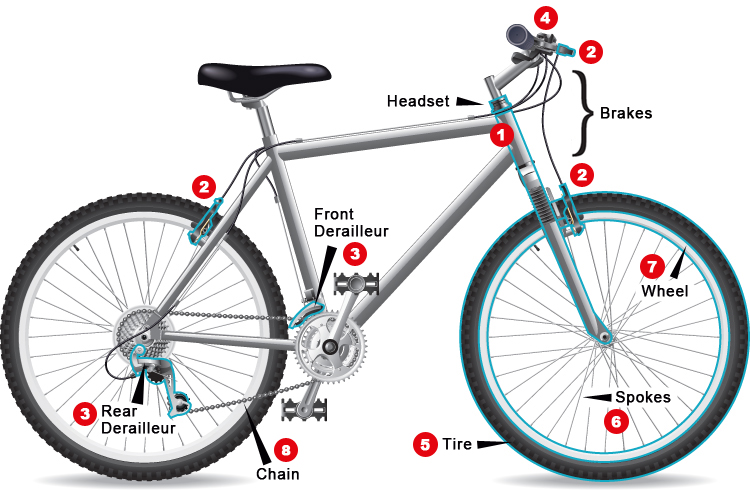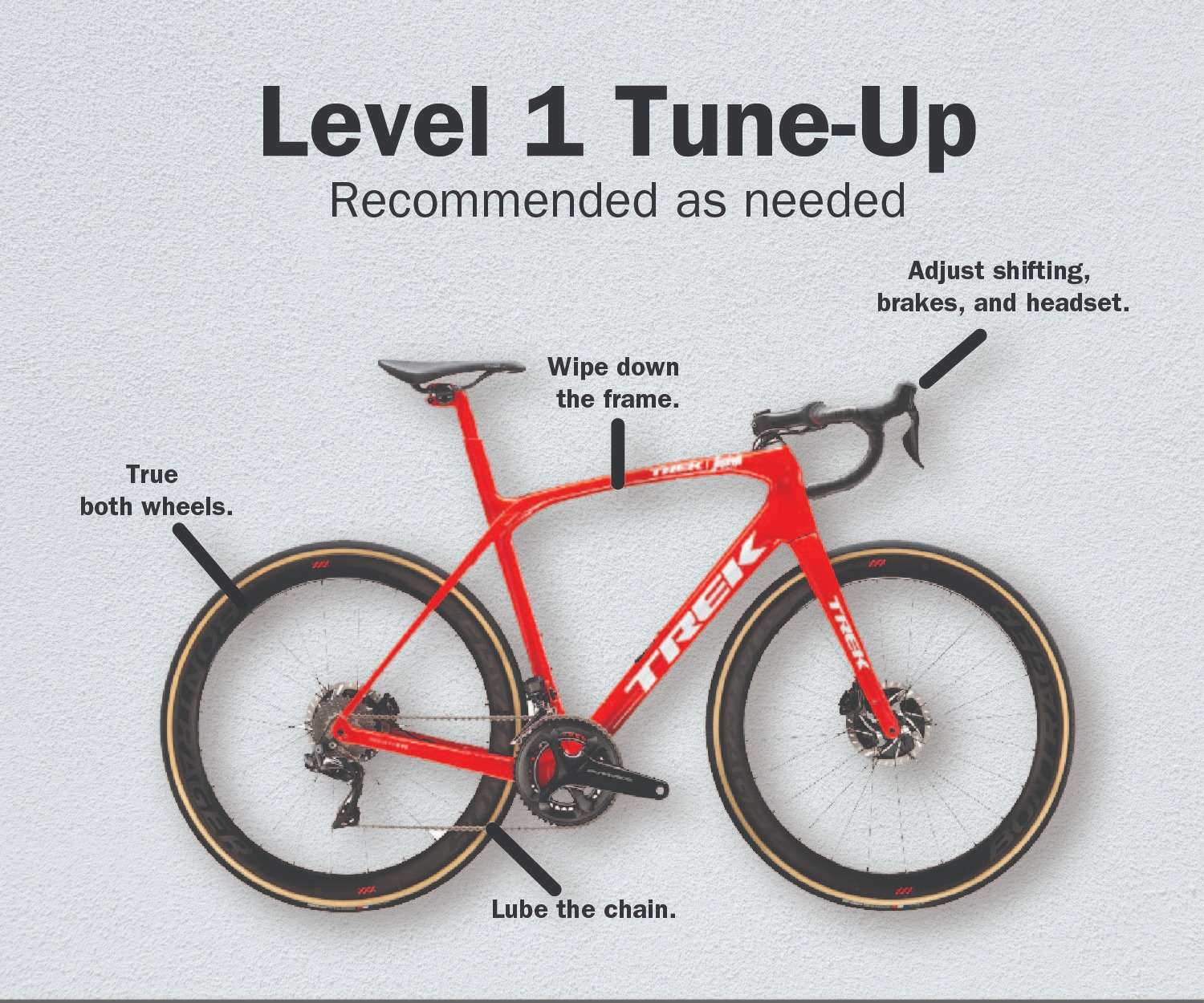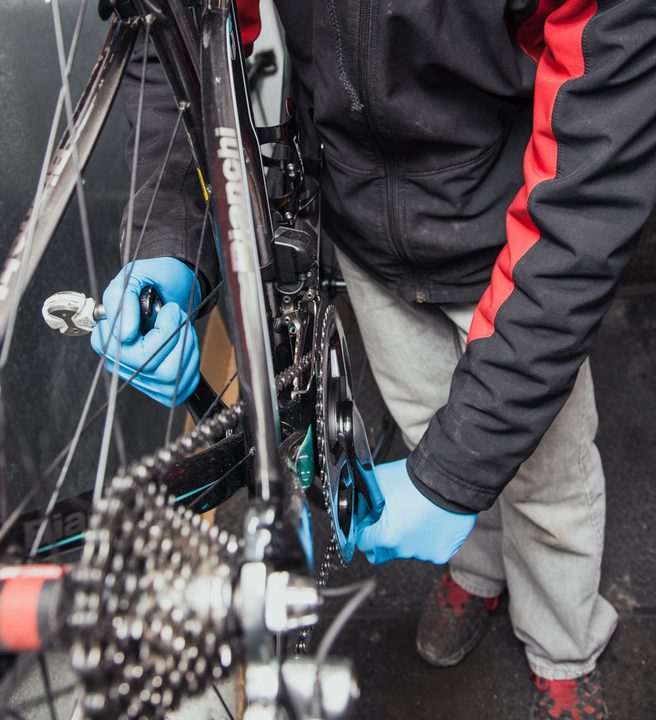A bike tune-up is essential for smooth and safe rides. It keeps your bike in top shape.
Tuning up a bike might seem daunting, but it’s simpler than you think. Regular maintenance ensures your bike performs well and lasts longer. From checking tire pressure to adjusting brakes, a proper tune-up covers all crucial components. Whether you’re a weekend rider or a daily commuter, knowing how to tune up a bike saves money and enhances your riding experience.
This guide will walk you through the steps, ensuring your bike is ready for any adventure. Get ready to roll smoothly and confidently with a well-tuned bike!

Credit: ilovebicycling.com
Table of Contents
Preparation
Before starting a bike tune-up, preparation is key. Proper preparation ensures the process goes smoothly. You will need the right tools and a thorough inspection of the bike. This will save time and avoid potential issues. Here’s how to get started:
Gather Tools
First, collect all necessary tools. You will need a set of Allen wrenches. Also, have screwdrivers, pliers, and a bike pump. Keep a clean rag and bike lubricant handy. These tools are essential for a thorough tune-up. Having them ready makes the process more efficient.
Inspect Bike
Next, inspect the bike closely. Check the tires for any wear or damage. Spin the wheels to ensure they are straight. Look at the brake pads and cables. Ensure they are not worn or frayed. Examine the chain and gears for rust and dirt. A careful inspection helps identify any problem areas. This step is crucial before making any adjustments.
Cleaning
Cleaning your bike is a crucial part of tuning it up. Dirt and grime can affect performance. A clean bike runs smoother and lasts longer.
Wash Frame
Start by washing the frame. Use a bucket of soapy water and a sponge. Gently scrub the frame to remove dirt. Pay attention to hard-to-reach areas. Rinse with clean water and dry with a soft cloth.
Clean Drivetrain
The drivetrain needs special care. First, remove the chain. Soak it in a degreaser for a few minutes. Use a brush to scrub off the grime. Rinse and dry the chain completely.
Next, clean the cassette and chainrings. Use a brush and degreaser. Wipe away any residue with a clean cloth. Finally, reattach the chain and lubricate it.
Brake Adjustment
Maintaining your bike’s brakes is essential for your safety and performance. Brake adjustment is a critical part of this maintenance. Properly adjusted brakes ensure you can stop quickly and safely. In this section, we’ll guide you through the process of adjusting your bike brakes.
Check Brake Pads
First, inspect the brake pads for wear and tear. Brake pads must be in good condition for effective braking.
- Look for grooves on the pads. If they are gone, replace the pads.
- Ensure the pads are not glazed or cracked.
- Check the alignment of the pads with the rim.
Worn-out brake pads can reduce stopping power and damage the rims. Always use the correct type of pads for your bike.
Align Brake Calipers
Next, align the brake calipers to ensure even braking.
- Loosen the caliper mounting bolts slightly.
- Squeeze the brake lever to center the calipers on the rim.
- Tighten the mounting bolts while holding the brake lever.
Aligned brake calipers make sure the pads contact the rim evenly. This prevents uneven wear and improves braking efficiency.
Check the distance between the pads and the rim. Adjust it using the barrel adjuster on the brake lever or the cable anchor bolt.
| Step | Action |
|---|---|
| 1 | Inspect brake pads for wear |
| 2 | Replace worn pads |
| 3 | Align brake calipers |
| 4 | Adjust pad distance |
Regular brake maintenance ensures your bike stops smoothly and safely. Check and adjust your brakes regularly for the best performance.
Gear Tuning
Tuning your bike’s gears is essential for a smooth ride. Proper gear tuning ensures that your bike shifts easily and rides efficiently. This section will guide you through the key steps to adjust derailleurs and lubricate the chain.
Adjust Derailleurs
The derailleurs control the shifting of your bike’s gears. Adjusting them is important for smooth gear changes.
Follow these steps to adjust your derailleurs:
- Shift your bike to the smallest chainring and the smallest rear cog.
- Locate the limit screws on the derailleur. They are usually labeled H (high) and L (low).
- Adjust the L screw so the derailleur aligns with the smallest cog.
- Shift to the largest chainring and largest rear cog.
- Adjust the H screw to align the derailleur with the largest cog.
- Fine-tune the barrel adjuster to ensure smooth shifting.
Lubricate Chain
Regularly lubricating your bike’s chain is crucial. It reduces wear and tear and ensures smooth operation.
To lubricate the chain:
- Clean the chain with a degreaser. Let it dry.
- Apply a small amount of chain lubricant. Use a drop on each link.
- Wipe off excess lubricant with a cloth.
Doing this regularly keeps your chain in good condition. It also extends the lifespan of your bike’s drivetrain components.
Tire Maintenance
Tire maintenance is a crucial part of keeping your bike in good condition. Properly maintained tires ensure a smooth and safe ride. In this section, we will discuss how to check tire pressure and inspect tire wear.
Check Tire Pressure
Maintaining the correct tire pressure is vital for a safe and comfortable ride. Here are the steps to check your bike’s tire pressure:
- Find the recommended tire pressure on the tire sidewall. It is usually written in PSI (pounds per square inch).
- Use a tire gauge to check the current pressure. Remove the valve cap and press the gauge onto the valve.
- Compare the reading with the recommended pressure. If the pressure is too low, use a pump to add air. If it is too high, release some air.
- Replace the valve cap after adjusting the pressure.
Inspect Tire Wear
Regularly inspecting your tires for wear can prevent accidents and ensure a longer tire life. Follow these steps to inspect tire wear:
- Check for visible cuts, cracks, or punctures on the tire surface.
- Look for signs of uneven wear. This could indicate a problem with the tire alignment or pressure.
- Examine the tread depth. If the tread is worn down to the same level as the tire surface, it is time to replace the tire.
- Check for embedded objects, such as glass or nails, that could cause a flat tire.
By regularly checking tire pressure and inspecting tire wear, you can ensure a safer and more enjoyable ride.

Credit: www.freeflightbikes.com
Wheel Truing
Keeping your bike’s wheels true ensures a smooth and safe ride. Wheel truing involves adjusting the spokes to eliminate any wobbles. This process helps maintain even spoke tension, preventing wheel damage. Let’s explore the steps for effective wheel truing.
Identify Wobbles
First, you need to identify any wobbles in your wheel. Place your bike in a stand or flip it upside down. Spin the wheel and look closely at its rotation. Notice any side-to-side movements or up-and-down bounces. These are the wobbles you need to fix.
| Step | Action |
|---|---|
| 1 | Spin the wheel |
| 2 | Observe for wobbles |
| 3 | Mark wobble points |
Adjust Spoke Tension
Next, adjust the spoke tension to correct the wobbles. Use a spoke wrench for this task. Tighten or loosen the spokes near the wobble points.
- To move the wheel left, tighten the right-side spokes.
- To move the wheel right, tighten the left-side spokes.
- Make small adjustments, about a quarter turn at a time.
Check the wheel’s trueness after each adjustment. Spin the wheel again and observe the changes. Repeat the process until the wheel spins smoothly without wobbles.
Remember, even spoke tension is key to a well-trued wheel. Patience and precision will ensure your bike rides smoothly.
Lubrication
Proper lubrication is essential for maintaining a smooth and efficient bike. It ensures that all moving parts work seamlessly, reducing wear and tear. This guide will help you understand how to lubricate different parts of your bike for a better ride.
Lubricate Cables
Lubricating the cables is crucial for smooth gear shifting and braking. Follow these steps:
- Shift to the smallest chainring and cog.
- Loosen the cable anchor bolt using an Allen key.
- Pull the cable out of its housing.
- Apply a few drops of bike-specific lubricant along the length of the cable.
- Slide the cable back into its housing and tighten the anchor bolt.
Apply Grease To Bearings
Bearings are found in various parts of the bike such as the wheel hubs, bottom bracket, and headset. Greasing them ensures smooth rotation and longevity. Here’s how to do it:
- Remove the wheel or component containing the bearings.
- Clean the bearings and their races with a degreaser.
- Apply a thin layer of high-quality grease to the bearings and races.
- Reassemble the component and ensure everything is tight.
By focusing on lubricating cables and applying grease to bearings, you can significantly enhance your bike’s performance. Regular maintenance will keep your bike running smoothly for years to come.
Final Checks
After tuning up your bike, it’s crucial to perform final checks. This ensures your bike is ready for the road. Let’s discover the necessary steps.
Test Ride
Start with a short test ride. This helps you identify any remaining issues. Pay attention to how the bike feels. Are the gears shifting smoothly? Is there any unusual noise?
- Check the brakes: Make sure they engage quickly and fully.
- Observe the steering: Ensure it is responsive and not wobbly.
- Listen for sounds: Unusual noises can indicate problems.
Perform these checks in a safe area, such as a driveway or a quiet street.
Ensure Safety
Safety is paramount. Verify all critical parts of your bike. Use this checklist:
| Component | Check |
|---|---|
| Brakes | Engage fully and quickly |
| Lights | Working and visible |
| Reflectors | Intact and clean |
| Tires | Properly inflated and no visible damage |
| Chain | Lubricated and free of rust |
Double-check that all nuts and bolts are tight. Ensure there are no loose parts. This will provide peace of mind before your ride.

Credit: cyclingmagazine.ca
Frequently Asked Questions
How Often Should I Tune Up My Bike?
Regular bike tune-ups are essential. Generally, it’s recommended to tune up your bike every six months. However, frequent riders may need it every three months. Regular maintenance ensures a smoother ride and prolongs the bike’s lifespan.
What Tools Do I Need For A Bike Tune-up?
Basic tools include a bike stand, Allen wrenches, screwdrivers, chain lubricant, and a tire pump. Additionally, having a cleaning brush and degreaser helps maintain the chain and gears. Investing in a good quality multi-tool is also beneficial.
How Do I Adjust My Bike’s Brakes?
First, check the brake pads for wear. Next, adjust the brake cable tension using the barrel adjuster. Ensure the pads align with the rims and test the brakes. Properly adjusted brakes ensure safety and optimal performance.
What Should I Check In A Bike Tune-up?
Check the tires, brakes, gears, and chain. Inspect the frame and handlebars for any damage. Lubricate the chain and moving parts. Tighten loose bolts. Regular checks ensure your bike remains in top condition.
Conclusion
Tuning up your bike ensures a smooth and safe ride. Regular maintenance prevents problems. Keep your tools handy and follow the steps. Cleaning and lubricating are key. Check brakes and tires for wear. Adjust gears for seamless shifting. A well-tuned bike is more enjoyable to ride.
Practice these tips often. Your bike will thank you. Happy cycling!

